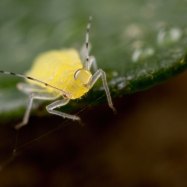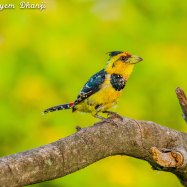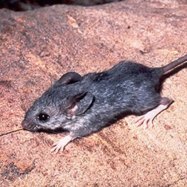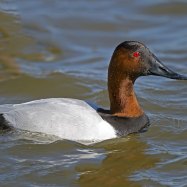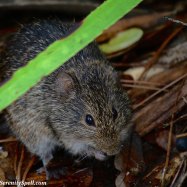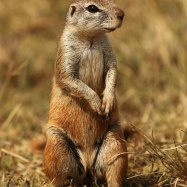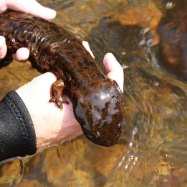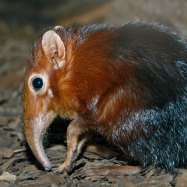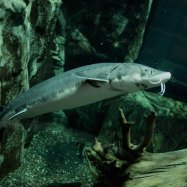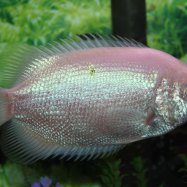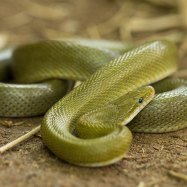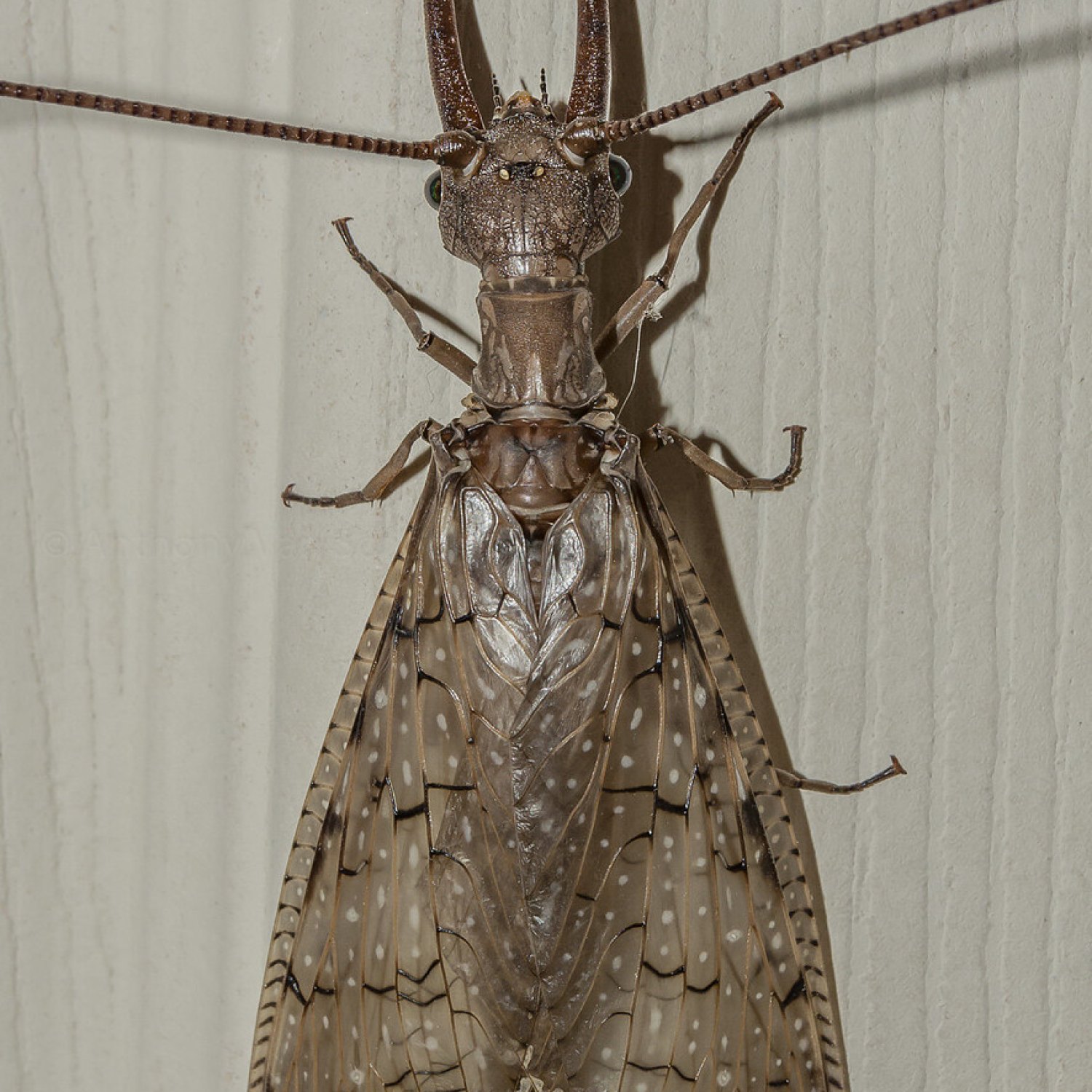
Eastern Dobsonfly
Adults - 2.5 to 4 inches (6.4 to 10.2 cm); Larvae - up to 4 inches (10.2 cm)
The Eastern Dobsonfly, found in Eastern North America, is known for its impressive size and long, slender wings. Adults can reach up to 4 inches in length, while larvae can grow up to 4 inches as well. The Dobsonfly belongs to the Corydalidae family and its unique body shape makes it a sight to behold in the wild.
Animal Details Summary:
Common Name: Eastern Dobsonfly
Kingdom: Animalia
Habitat: Streams, rivers, and lakes
The Mighty Eastern Dobsonfly: A Fascinating Insect from Eastern North America
The world of insects is filled with a vast array of fascinating and diverse creatures. From tiny beetles to large praying mantises, each insect has its unique features and abilities. In the eastern part of North America, one insect stands out for its impressive size and captivating appearance – the Eastern Dobsonfly.Known by its scientific name Corydalus cornutus, the Eastern Dobsonfly is a member of the Megaloptera order and Corydalidae family Eastern Dobsonfly. It is commonly found in streams, rivers, and lakes in the eastern United States and southeastern Canada. With its predatory feeding method and distinctive physical characteristics, let's dive into the fascinating world of this mighty insect.
Body Structure and Appearance
The Eastern Dobsonfly is a large and elongated insect with a body length ranging from 2.5 to 4 inches in adults and up to 4 inches in larvae. Its body is segmented and covered in a hard exoskeleton, which provides protection and support. The body is divided into three sections – the head, thorax, and abdomen.At first glance, the most striking feature of the Eastern Dobsonfly is its giant wings. They are long and slender, resembling the shape of a dragonfly's wings. The wingspan can reach up to 6 inches, making them one of the largest wings of any insect in the Eastern United States Eastern Gorilla. The wings are transparent with distinct brownish-black markings, giving them a delicate yet elegant appearance.
However, it's not just the wings that make the Eastern Dobsonfly a unique insect. The adult males of this species have large, curved mandibles that can be as long as their body. These powerful jaws are used to capture prey and for competition with other males. In contrast, the females have shorter, straight mandibles, which they use for chewing and mating.
Habitat and Distribution
The Eastern Dobsonfly is primarily found in eastern North America, specifically in the eastern United States and southeastern Canada. They are commonly found in cool, fast-flowing streams and rivers with clean water. Their larvae are aquatic, and they spend most of their lives in the water. They can also be found in lakes and other bodies of water, but they prefer shallow, well-oxygenated streams.This species' preference for clean water makes them indicators of a healthy ecosystem. They are sensitive to pollution and are unable to survive in polluted or contaminated water. Therefore, the presence of Eastern Dobsonflies in a body of water is a sign of its good health, making them valuable biological indicators for environmental studies.
Feeding Habits
Eastern Dobsonflies are known for their predatory behavior, with their larvae being fierce predators in the water. They have large, powerful mandibles that they use to grasp and crush their prey, which primarily consists of other insects and aquatic invertebrates.Once fully developed, the adult Eastern Dobsonflies do not feed at all. Instead, they spend their short adult life focused on mating and reproducing. They do not have functioning mouthparts, making them solely reliant on the energy reserves they have acquired during their larval stage.
Reproduction and Life Cycle
The mating ritual of Eastern Dobsonflies is a sight to behold. The males use their striking mandibles to impress females during courtship. The larger and more impressive the mandibles, the more likely they are to attract a mate. Once a female is chosen, the pair will remain connected in a mating position, sometimes for hours, before releasing eggs into the water.After hatching, the larvae will spend the next few years of their life in the water, feeding and growing. As their larval stage nears its end, they will emerge from the water and undergo a metamorphosis process, transforming into their adult form. The adult stage of an Eastern Dobsonfly's life can only last for a few days to a few weeks, depending on their gender. Males typically have a longer lifespan than females.
Importance in the Ecosystem
Eastern Dobsonflies play a crucial role in maintaining the balance of aquatic ecosystems. As predators, they help control the population of other insect species, promoting biodiversity. They are also a source of food for other creatures in the water, such as fish and birds.Moreover, as mentioned earlier, the presence of Eastern Dobsonflies is an indicator of good water quality. Their sensitivity to pollution makes them valuable in monitoring water pollution levels and maintaining the health of aquatic environments.
Threats and Conservation Status
Despite their unique physical features and ecological importance, Eastern Dobsonflies face various threats and challenges. They are susceptible to water pollution and habitat destruction, especially with the increasing human activities in their natural habitats. Changes in water flow and water temperature due to human interference can also negatively impact their survival.Furthermore, the adult Eastern Dobsonflies have a short lifespan, making them vulnerable to changes in weather conditions. Climate change can potentially have a significant impact on their population and distribution.
Currently, there are no specific conservation efforts targeted towards Eastern Dobsonflies. They are not listed as an endangered species, but their populations may be declining in certain areas. Therefore, it is essential to continue monitoring their populations and the health of their habitats to ensure their survival.
In Conclusion
The Eastern Dobsonfly is a magnificent insect with impressive physical features, vital ecological roles, and a fascinating life cycle. As one of the largest insects in eastern North America, it is a unique and essential part of the ecosystem.However, their vulnerability to environmental changes serves as a reminder of the impact human activities can have on the natural world. Therefore, it is crucial to continue studying and understanding this mighty insect to protect its survival and the delicate balance of our ecosystems. So, the next time you come across an Eastern Dobsonfly, take a moment to appreciate its beauty and importance in the world of insects.

Eastern Dobsonfly
Animal Details Eastern Dobsonfly - Scientific Name: Corydalus cornutus
- Category: Animals E
- Scientific Name: Corydalus cornutus
- Common Name: Eastern Dobsonfly
- Kingdom: Animalia
- Phylum: Arthropoda
- Class: Insecta
- Order: Megaloptera
- Family: Corydalidae
- Habitat: Streams, rivers, and lakes
- Feeding Method: Predatory
- Geographical Distribution: Eastern United States and Southeastern Canada
- Country of Origin: United States
- Location: Eastern North America
- Animal Coloration: Adults - brownish-black wings, yellowish-brown body; Larvae - dark-colored with large mandibles
- Body Shape: Large and elongated body with long, slender wings
- Length: Adults - 2.5 to 4 inches (6.4 to 10.2 cm); Larvae - up to 4 inches (10.2 cm)
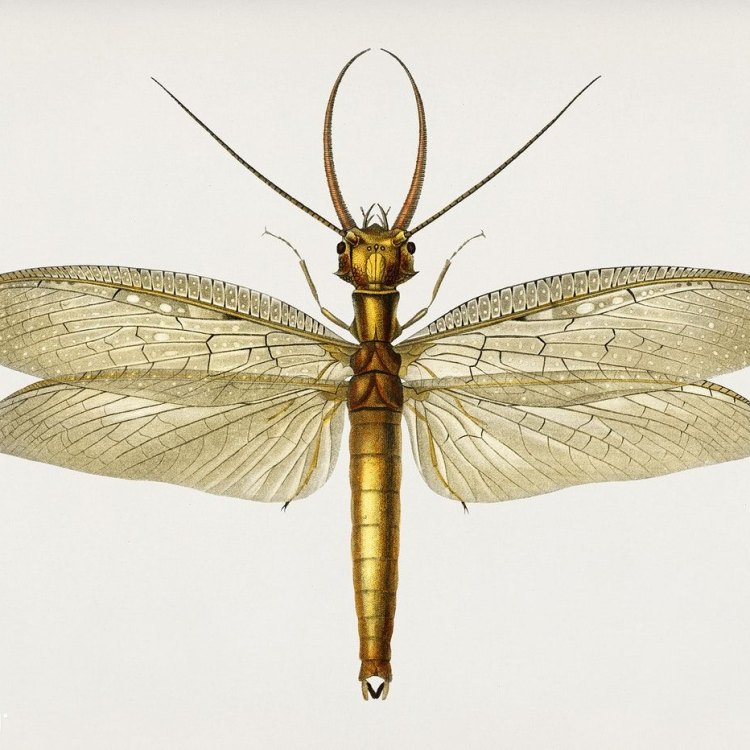
Eastern Dobsonfly
- Adult Size: Large
- Average Lifespan: 2 to 5 weeks
- Reproduction: Sexual
- Reproductive Behavior: Males attract females by releasing pheromones and engaging in aerial combat
- Sound or Call: Males produce a buzzing sound by rubbing their wings together
- Migration Pattern: No documented long-distance migration
- Social Groups: Solitary
- Behavior: Nocturnal
- Threats: Habitat loss, water pollution
- Conservation Status: Not evaluated
- Impact on Ecosystem: They are indicators of water quality and play a crucial role as predators in stream ecosystems
- Human Use: Fishing bait
- Distinctive Features: Large mandibles in larvae, long and slender wings in adults
- Interesting Facts: 1. Male Eastern Dobsonflies have long, curved mandibles that are actually used for courtship and not for defense. 2. They are attracted to light sources and may gather around lights at night. 3. The larvae of Eastern Dobsonflies are known as hellgrammites and are used as bait by anglers.
- Predator: Birds, bats, fish
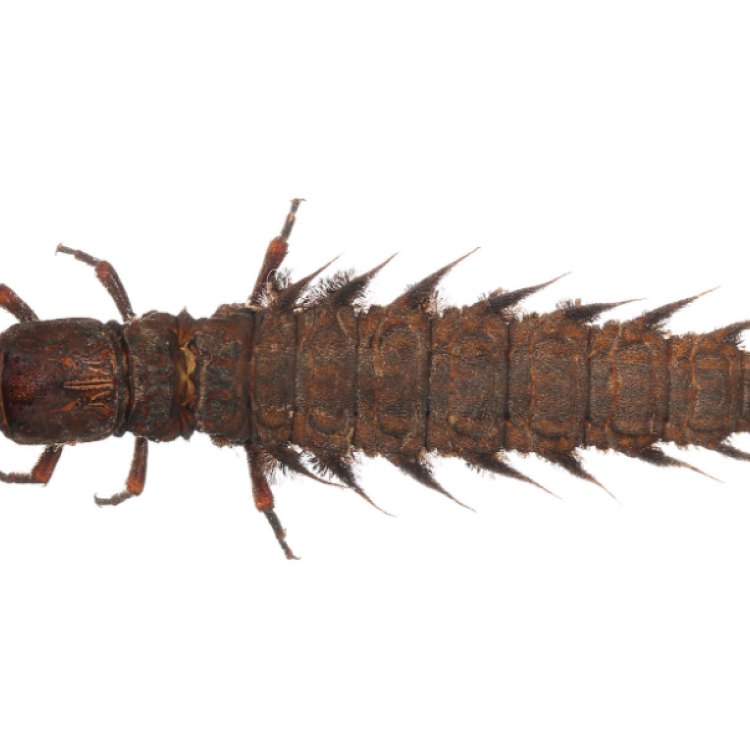
Corydalus cornutus
The Fascinating World of the Eastern Dobsonfly: A Marvel of Nature
Nature has always been a source of wonder and fascination for humans. From the tiniest insects to the largest mammals, each and every creature has its own unique features and characteristics that make them a part of this diverse and amazing world. Amongst these intriguing creatures is the Eastern Dobsonfly, a large insect with mesmerizing features and behaviors.The Eastern Dobsonfly, scientifically known as Corydalus cornutus, belongs to the family Corydalidae, which includes other species of dobsonflies and fishflies PeaceOfAnimals.Com. It is one of the largest insect species found in North America, with a wingspan of up to 5 inches and a body length of 3 inches. Its size alone is enough to grab attention, but there is much more to this remarkable insect than meets the eye.
Let’s delve deeper into the world of the Eastern Dobsonfly and explore its unique features, behaviors, and role in nature.
Average Lifespan and Reproduction
The Eastern Dobsonfly has a relatively short lifespan, with an average of only 2 to 5 weeks. However, it is during this short period that they play a crucial role in nature. As with most insects, the Eastern Dobsonfly has a sexual mode of reproduction. This means that the male and female insects engage in sexual reproduction to produce offspring.Mating Rituals
The reproductive behavior of the Eastern Dobsonfly is truly fascinating. Male Dobsonflies attract females by releasing pheromones, a type of chemical signal, to attract females of the same species Egyptian Mau. These pheromones are released through pores on the male’s body, and they can be detected by female Dobsonflies over a distance of almost a mile. It's incredible to think that these small insects have such powerful communication methods.But the courtship rituals of the Eastern Dobsonfly do not end there. Males also engage in aerial combat, competing for the attention of the females. They fly in circles, chasing and grappling with each other, to prove their dominance and worthiness to the females.
Sound Production
One of the most distinctive features of the Eastern Dobsonfly is its ability to produce sound. Males produce a buzzing sound by rubbing their wings together, a characteristic that is known as stridulation. This sound is often mistaken for the sound of a bumblebee or a hummingbird, but it is, in fact, the Eastern Dobsonfly’s unique way of attracting females.No Migration, Solitary Behavior
Unlike some other insect species, the Eastern Dobsonfly does not have a documented long-distance migration pattern. They are solitary insects, meaning that they do not travel in groups or colonies. Instead, they prefer to live and hunt alone, making their own paths in the world.Nocturnal Creatures
If you happen to come across an Eastern Dobsonfly, chances are it will be at night. These insects are nocturnal, meaning they are most active during the night and sleep during the day. This behavior is likely due to their large, delicate wings, which are easily damaged by the sun's rays.Threats to Eastern Dobsonflies
Like many other species, the Eastern Dobsonfly faces several threats that impact its population. Habitat loss is one of the biggest threats, as these insects require clean, unpolluted water to survive. Water pollution from human activities can adversely affect the Eastern Dobsonfly's breeding and food sources, ultimately leading to a decline in its population.Conservation Status and Ecosystem Impact
Despite their distinctive appearance and important role in nature, the Eastern Dobsonfly has not been evaluated for conservation status. However, they play a crucial role in their ecosystem as indicators of water quality. This means that their presence or absence can determine the overall health of a stream ecosystem. They are also important predators, feeding on other insects and helping to keep their population in check.Human Use of Eastern Dobsonflies
While the Eastern Dobsonfly may not be a commonly known insect, it has been utilized by humans in various ways. The larvae of Eastern Dobsonflies, known as hellgrammites, are used as fishing bait by anglers. These larvae are high in protein and are known to attract a wide variety of fish, making them a popular choice among fishermen.Distinctive Features of Eastern Dobsonflies
Apart from their large size, Eastern Dobsonflies have some distinctive features that make them stand out from other insect species. The larvae have large, powerful mandibles, almost as long as their body, which they use to capture and feed on other insects in the water. These mandibles may look intimidating, but they are mainly used for courtship and not for defense.The adults have long and slender wings, with intricate patterns and markings on them. Their wingspan and delicate nature make them appear almost magical, especially when seen flying at night.
Interesting Facts about Eastern Dobsonflies
1. Male Eastern Dobsonflies have long, curved mandibles that are actually used for courtship and not for defense. This is a unique feature among insect species, where males typically use their mandibles for defense or fighting.2. They are attracted to light sources and may gather around lights at night. This behavior can put them at risk of being preyed upon by predators, such as bats and birds.
3. The larvae of Eastern Dobsonflies, known as hellgrammites, are used as bait by anglers. These larvae are a popular choice among fishermen due to their ability to attract a wide variety of fish.
Predators of Eastern Dobsonflies
Despite their impressive size and mandibles, Eastern Dobsonflies have predators like any other insect. They are preyed upon by birds, such as herons and kingfishers, as well as bats and fish. However, these insects have a defense mechanism that helps them blend in with their surroundings. They are able to change their color to camouflage with their environment, making it harder for predators to spot them.In Conclusion
The Eastern Dobsonfly is a truly fascinating creature, with its unique features, behaviors, and role in nature. From their short lifespan and sexual reproduction to their production of sound and use as fishing bait, these insects have captured the interest and curiosity of many. As humans, it is important to understand and appreciate the diverse world of nature and the important role each and every species plays in it. Let us work towards preserving the habitats and ecosystems of these amazing creatures, including the Eastern Dobsonfly, for generations to come.
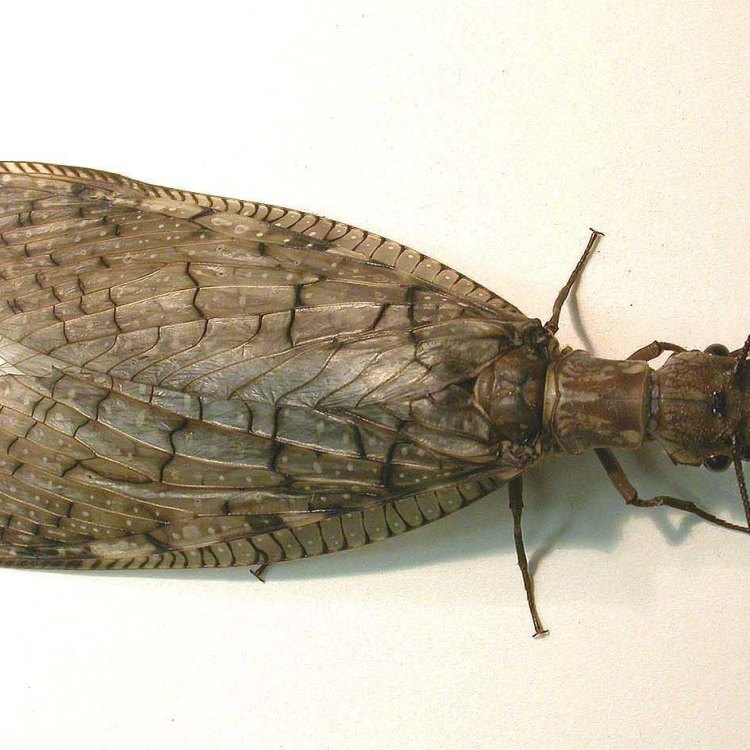
The Mighty Eastern Dobsonfly: A Fascinating Insect from Eastern North America
Disclaimer: The content provided is for informational purposes only. We cannot guarantee the accuracy of the information on this page 100%. All information provided here may change without prior notice.

